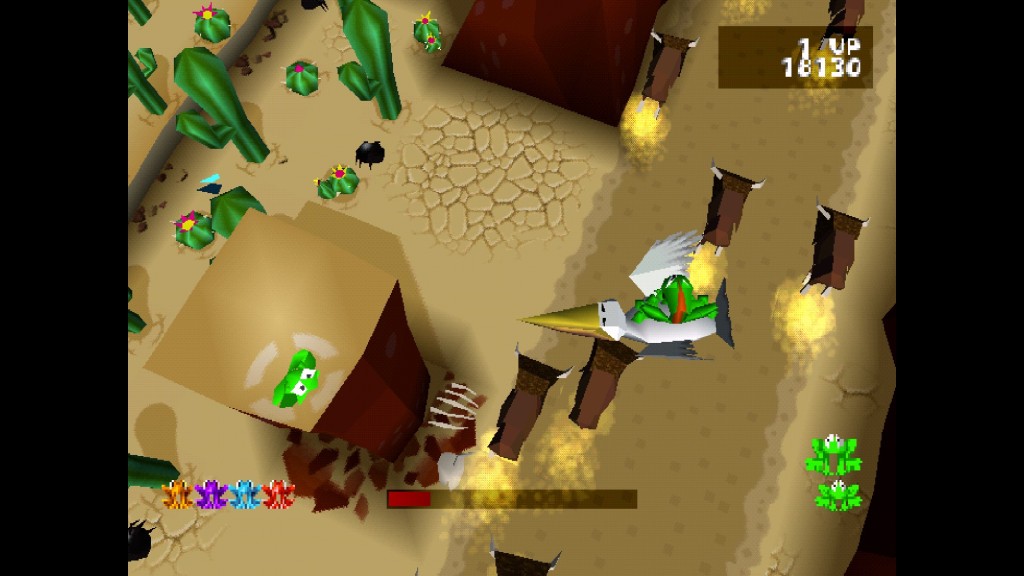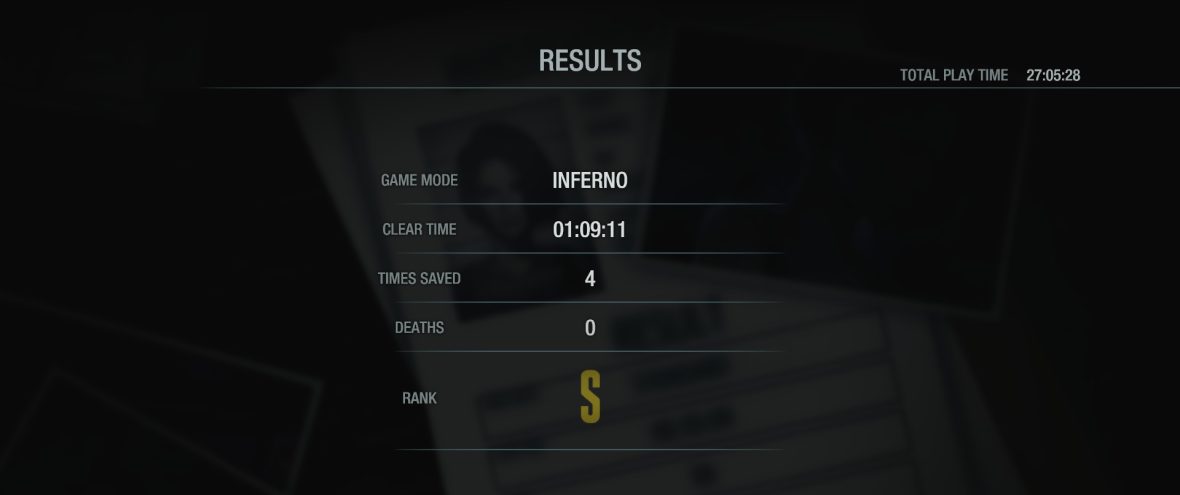I got my original PlayStation as a Christmas present in 1997, along with two games. The original Tomb Raider had been highly requested by me after playing it at a friend’s house. The other game was Frogger, a 3D re-imagining of the arcade classic. This was one of those gifts my mom had bought as a present for me but also her, as she had been a fan of the arcade game in the ’80s and thought a new take on it would be a nice game for us to play together. She was right, and Frogger ended up as one of my favorite childhood games. It was also really hard, though, so I never finished it back then. Recently, I found myself itching for a replay and decided it was time to finally beat the game after all these years.

Frogger plays very similarly to the original game, but designed around 3D environments. You traverse each level in search of 5 baby frogs to rescue. Each time you touch one of the technicolor frogs, you’re sent back to the start of the level to find the next one. They can be found in any order, but you are on a time limit and have limited lives to boot. Along the way, numerous deadly hazards will impede your progress. Levels are divided into blocks called zones, each containing between 2 and 5 levels with a similar theme and setting. Fittingly, the first zone eases you into the game by recreating the original game’s levels in 3D. Every zone has a golden frog hidden somewhere within it, and finding these serves dual purposes – each gold frog found opens a new zone on the level select screen to play, and finding all 8 is required to see the game’s true ending. The final zone is unique in that it contains a single level, Tropical Trouble, to round out the game, and said level is home to a temple adorned with frog iconography. Upon entering the temple, all of the golden frogs you’ve rescued will be displayed and the game will either play the ending cutscene or cut straight to the credits, depending on whether or not you found them all.

The simple mechanics make Frogger a fun arcade-y experience, but it’s brutally difficult for a children’s game. As I mentioned above, I never got the true ending as a kid despite loving the game and playing it for countless hours over the course of years. The time limit is very strict in some stages, to the point that it’s common to nab a baby frog as the timer hits 0 and the “you lost” trombone jingle starts playing. The limited lives wouldn’t be an issue if the game wasn’t full of trial-and-error gameplay. Most living creatures and machinery you encounter in the levels will instantly kill you if you touch them, but some others don’t. For example, vultures in the Cactus Zone levels will kill you, but pelicans found in multiple zones must be ridden in order to reach frogs tucked away in high places. Turtles must be ridden in many levels to cross water (which still inexplicably drowns our hero), but they sometimes dip below the surface with deadly results if you’re still hitching a ride. Alligators can similarly be ridden to cross rivers, but you have to specifically jump on their backs, as landing on their heads will cause them to eat you. There’s a weird logic to the stage hazards that makes sense after a while, but will likely cause many game overs for new players.

Despite the difficulty, Frogger is very fun and gets creative with the formula in its zones. One zone is set in what appears to be a suburban area off a highway, so the levels include ponds with lily pads to jump across, short stretches of road akin to the retro levels, and enemies that take the form of runaway lawnmowers and dogs. Another sees our little hero making his way across heavy machinery above a pool of lava. In these levels, switches must be pressed to make platforms move in order to reach the babies, all while avoiding being crushed by the larger machines and quickly running across trapdoors. My favorite zone was always Cloud Zone, where all the levels take place high in the clouds. You need to ride various birds to clouds where the baby frogs are waiting. This zone features a unique level called Time Flies, wherein you ride a flock of ducks flying around in a spiral pattern while eating “time flies” (get it?) to increase the time limit. Eventually, they drop you off on the clouds far below your starting position, where you can finally grab the baby frogs. The final level of this zone, Airshow Antics, also stands out as a cool one. This level is set at night, on clouds that are so high up that they’re now slick like ice. You need to hop across passing jets and slide across the clouds to reach the baby frogs, all while avoiding helicopters that occasionally rise through the clouds as you’re crossing them.
The unique zone themes paired with a deliciously ’90s soundtrack that mixes influences from funk to drum ‘n’ bass to atmospheric synths make for a pleasant game despite the often frustrating difficulty. The early 3D low-poly visuals have a certain charm to them with how they make many objects resemble origami figures. You could probably make papercraft projects out of the levels that would look indistinguishable from the in-game graphics. There’s a feeling of whimsy and abstraction the visuals evoke that I still like to this day.

To beat the game, all you actually have to do is collect all 8 golden frogs and finish the final level. Mercifully, this means that some of the trickiest levels are optional. Further, you can play the final level and see the ending credits without even gathering all of the gold frogs. Even with those caveats, you can still expect to see the game over screen plenty of times. Thankfully, getting a game over isn’t very punishing. You have unlimited continues, so getting a game over merely makes you lose progress on the current level. The only real challenge is getting all 5 frogs with the starting 3 lives. Golden frog progress is tracked differently, as you can find one and then get a game over with no penalty; it’s still counted as found from that point on. Finishing a particularly challenging zone or even some of the more demanding levels was very satisfying during this playthrough. It really made me appreciate the patience I must have had as a child, since some of the levels I clearly remembered beating back in the day gave me plenty of trouble as an adult.
After many, many deaths and getting lost in the larger levels more times than I’d like to count, I finally managed to see the true ending of Frogger earlier this week. It’s really not much of a reward, as all you get is a compressed video of the titular frog and his lady friend watching the golden frogs hop around what I assume is their house. But, that’s not really the point, is it? The satisfaction of finally besting a game that I loved but could never finish as a kid was its own reward. As I mentioned above, I think the experience gave me a newfound appreciation for what a patient little gamer I was in my youth to get as far as I did. It was also nice to take a trip down memory lane with a game I loved playing with my mom back then, as she’s no longer with us. This iteration of Frogger was critically panned but sold an impressive 6 million copies across PlayStation and PC. Plenty of other kids must have owned it, but I never hear anyone talk about it, so I wanted to share my experience with the game both then and now. It was an amusing mix of fun and frustrating to replay, and I’m glad I finally saw it through to the end.

